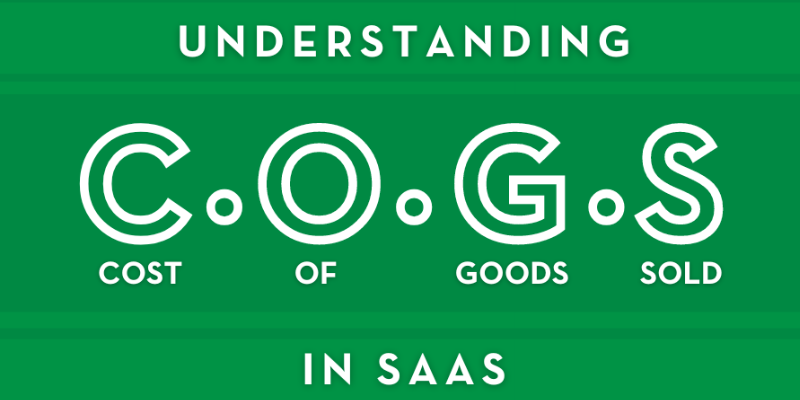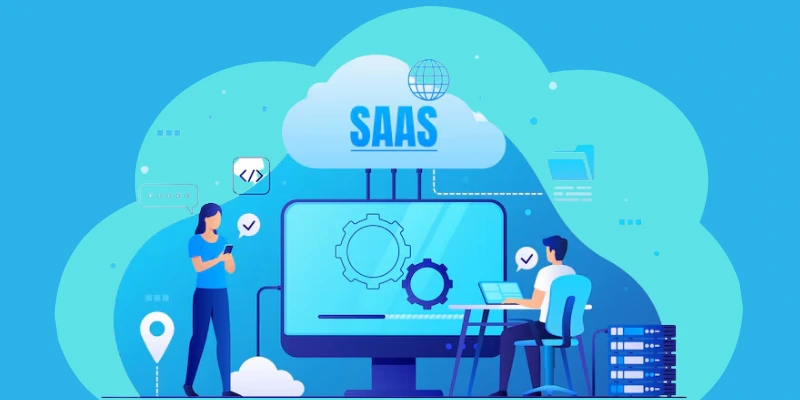0Artificial Intelligence (AI) technology has entered the mainstream. Generative AI software, which employs machine learning algorithms and input training, has evolved to create texts, images, videos, and even computer code on the same level as humans. As a result, the number of companies using AI software to create their products is increasing.
As with SaaS Development cloud services and other technological advances, AI tools have development costs that must be adequately compensated. With the constant technological advancements, it's vital to stay up-to-date with the applicable guidelines for software cost accounting and be aware of which accounting standards—ASC 985-20 and ASC 350-40—are relevant to each situation. Determining which accounting rule to follow is the first and most crucial stage because the regulations to capitalize differ significantly among both standards.
ASC 985-20 is the rule of software capitalization for software for use outside the company. It applies to programs that an organization—typically an entity that develops software—plans to lease, sell, or sell to the public. "Externally," in this scenario, refers to software installed on-premises by the customer.
ASC 350-40, however, on the contrary, regulates software that an organization doesn't intend to sell, lease, or sell to the public but will instead utilize internally. The standard is often known as the rule of capitalization for software used in internal-use software. Since an entity creates software exclusively for its internal purposes and sells subscriptions for software accessible to users via the cloud or SaaS and purchases a cloud or SaaS hosting plan.
Read Also: SaaS Software Development Best Practices: 2024
What Are COGS In a SaaS Company?
The cost of goods sold (COGS) in a software-as-a-service (SaaS) company refers to the direct expenses you incur when building and running subscription-based software services. COGS is also known as the cost of sales. Unlike traditional software businesses that produce and distribute copies of their software, the services can be software-driven and distributed via the Internet.
It is a fact that most SaaS firms are over-reporting their COGS. They're unsure what to include when preparing their report on the cost of goods sold. A few people equate operating costs (OPEX) with the cost of the goods sold (COGS). This is inaccurate and can result in adverse effects, including a reduction in the price of shares.
The Impact Of COGS On SaaS Business Financials
It is important to note that the Cost of Goods Sold (COGS) plays the most significant role in determining the SaaS Development Company financial health and strategic direction. It's not just an essential element for computing critical financial metrics. Still, it is also a crucial indicator by which stakeholders, investors, and managers evaluate the business's economic performance.
COGS directly impact your gross margin, one of SaaS's most closely watched financial indicators. Gross profit margin (GPM),calculated as the ratio between revenue and COGS as a percentage of revenue, provides insight into the core profitability of business activities for any given organization. Lower COGS is equivalent to a more significant gross profit margin. It indicates an efficient delivery of services and, ultimately, more intrinsic profitability.
Accurately calculating COGS can also improve the clarity and precision of financial statements. It not only aids managers in making the right strategic choices but also offers stakeholders and investors a clear picture of the business's performance and financial profitability. Deflated or inflated COGS may result in deformed financial statements, obscuring the company's economic situation and preventing information.
In addition, Understanding COGS will provide practical cost control and price-setting information. Through the analysis of COGS, companies can identify costs and possible opportunities for cost-saving, which allows them to increase the efficiency of their operations and improve profit margins. This also serves as a foundation for establishing pricing strategies to ensure profit while staying on top of the competition.
In the SaaS business model, where regular revenues and long-term customer relations are essential, the significance of COGS goes beyond accounting—it's an operational compass that guides cost management, pricing decision-making, and strategic strategy. Therefore, having a thorough comprehension of COGS and the precise computation of COGS is essential to the SaaS firm's financial and operational growth.
A Brief Outline Of ASC 985-20 And ASC 350-40
Two major subtopics of the FASB ASC framework apply to the management of the development cost for software:
ASC 985-20 Software refers to expenses that arise when creating software that is either leased, sold, or marketed in other ways as an individual product or as part of the process of making a product. The traditional licensing process for software (software installed on the customer's server) generally falls under this category (for example, word processing software or spreadsheet programs typically installed on a user's personal computer).
ASC 350-40 "Intangibles—Goodwill and Other—Internal-Use Software" covers the expenses for creating software used exclusively to satisfy a business's internal needs or to offer the services its customers require. This could include hosting a copy of the software for customers to download online and operating as a software-as-a-service (SaaS) supplier. Though the distinction appears clear initially, determining which one applies to an individual piece of software isn't necessarily straightforward.
Unlike earlier, most software is delivered as a disk or downloaded as a collection of digital files. Many of the software available today is provided on a subscription basis rather than a purchase on its own. The SaaS Development Services, cloud hosting, and other advancements have led to much of the current software development being carried out so that a company can offer a service for its clients instead of delivering a copy of the software. This means that the associated software development expenses (for instance, SaaS) typically would be covered by ASC 350-40 instead of ASC 985-20 because the software will be employed within the organization to offer the service.
The difference between standards for capitalization (ASC 985 as opposed to ASC 350) matters as the two standards set out very different criteria for when an organization can begin capitalizing development costs for software. In particular, the cost of designing the software, its configuration, and software coding usually are accounted for according to ASC 985-20. However, ASC 350-40 usually requires capitalizing these costs. They also differ regarding the moment during the process of development at which the business should start to capitalize on expenses. Companies must make sure they follow the correct guidelines.
Please be aware that this is merely a general guideline that is not considered the sole source of advice or guidelines to determine which standard applies to particular development costs.
In general, the decision of which guidelines are applicable is based on the responses to two of the following questions:
-
Does the user have access to the program during the subscription or hosting period without significant penalties?
-
The customer can operate the software independently or hire a third party to host the software.
If you answer both of these questions with "yes," the related expenses for software development may be in the realm of ASC 985-20. SaaS businesses should think about the issue carefully and talk with their auditors from a third party for a response.
Read About: Which are The Top SaaS Startup Ideas for Industries Beyond 2024?
Difference Between ASC 985-20 And ASC 350-40
The main difference between ASC 985-20 and the 350-40 model is that the client can own software. ASC 985-20, the software operates on the client's infrastructure (or the cloud vendor's network). In ASC 350-40, the software runs within the company's in-house infrastructure (or the cloud vendor's infrastructure). It is available online to those who subscribe or cloud to SaaS Software Development services or utilize it internally by the organization.
Another important distinction is the requirement for ASC 985-20 to determine technology capability before the software can be capitalized. Since technological feasibility is typically determined shortly before a software product is at its GA stage, many companies don't have any material expenses capitalized under ASC 985-20.
In contrast, ASC 350-40 does not need to establish technology-related feasibility to capitalize. It states that capitalization is contingent on the application's level of development. Development expenses paid for during the app phase are generally capitalized; however, costs incurred beyond this stage are accounted for.
What Is The Process Of Accounting For New Technology?
Let's take a look at how the latest software development accounting operates.
-
If the CCA contains a software license according to the previous guidelines, it is covered by the internal-use software guidelines. The guidance outlines which expenses should be capitalized, including the expense of acquiring the license and the cost of implementation.
-
If a software license does not accompany the CCA, the arrangement will be a service contract with the CCA. Fees associated with the CCA are recorded similarly to other SaaS charges, typically categorized as operating expenses. The prior guidance doesn't mention the implementation expenses related to the services contract.
-
The updated guidance clarifies that the implementation cost includes CCAs that don't transfer the software license. Depending on the nature and duration of the expenses, they can be eligible for capitalization.
Aspects Of Complexity That Arise From Agile Software Development
The main issues in software investment accounting arise due to the evolution of software development practices. In the past, a linear approach or "waterfall" method typically involved software design in a sequence that "flowed" steadily downwards through long development stages. The accounting for investment in linear or waterfall design methods was relatively simple compared to the modern world.
The latest technology and development process are largely based on the agile development cycle. Through agile software development, requirements and solutions—including many that involve CCA arrangements—develop through collaboration between cross-functional groups that self-organize. This approach has many benefits.
Yet, the challenge of integrating the agile delivery model and models of development and outdated rules for financial reporting results in several complexities.
-
Compared to the linear system, this agile method is more than just iterative.
-
The latest accounting cost guidance is concise and fundamentally based, with only a few specifics. Therefore, deciphering the specifics of development costs is a matter of judgment and usually requires additional data, particularly for complicated operations in a dynamic environment.
What Are The Factors Cogs Look At In The Case Of a SaaS Firm?
The cost of services that make up the SaaS revenue core is mainly made up of these expenses:
-
Expenses are associated with hosting the software and the infrastructure necessary to operate it.
-
SaaS Software Developers costs related to maintaining the production environment, also called infrastructure equipment, and in-house engineering, also known as DevOps.
-
Employee costs for application customer support/satisfaction. For COGS, the success allocation should be centered on staff responsible for renewals. The people responsible for selling or cross-selling should be included in the operational costs.
-
Costs of third-party software or the data contained in the delivery product.
-
Other direct costs of employees are necessary to provide the ongoing service.
-
It's common to see early-stage SaaS businesses get reduced server credits from providers like AWS, Google Cloud, or Azure. However, even if you do not pay for these credits, you must impute the cost to assess performance metrics for business.
-
Support for technical and customer service should comprise the expenses of the customer support team and the staff's wages, which are accountable for keeping the program's production instances running.
-
The costs of the technology team for improving the product should be excluded from COGS.
How Can You Use SaaS COGS?

Knowing COGS is essential in calculating SaaS gross margins. They usually range between 60 and 90 percent. Thus, SaaS COGS ought to be between 10 and 40 percent. Most SaaS firms over-report their costs of goods sold to avoid misleading investors.
COGS will also assist you in estimating the gross profit of your SaaS company. You can calculate the extra income you need for operational expenses like rent, sales, and marketing. Additionally, you can use the information to create a SaaS COGS benchmark. Comparing crucial SaaS practices and business metrics with industry peers and standards could help you identify ways to increase gross margins and net profits.
Investors also seek COGS on the SaaS Application Development P&L to determine their profitability. This is why they are attracted to the potential of a SaaS business. More significant gross margins translate into an increased valuation. This could increase the value you receive during an investment round. Net profit is often lower when gross margins are low. Lower margins for profit make raising funds for R&D and innovations more difficult. Additionally, you might not have enough money to finance sales and marketing initiatives that will help draw more clients and better-value customers.
Many companies operating within the SaaS industry believe their gross margins will grow over time. This isn't always the case. It may be challenging to make the most of your SaaS COGS for a larger enterprise if comprehending and distributing them is difficult. The result could be that you cannot show higher margins, which would boost your value, attract investors, and make the process of servicing operating expenses easier.
Also Read: An Ultimate Guide to Developing Cloud Based SaaS Apps
Cost Breakdown Of Cloud And On-Premise Software
Since it is so widespread, it is likely that most people are aware of it. However, it lets internet users use a computing resource from a third party within an almost endless web of connected servers. That let you run your PC's programs over the internet without needing to purchase, set up, or maintain the servers.
This means you can manage your business' IT processes with no other than a web browser and internet connectivity. With the help of cloud computing, companies of all sizes can cut IT expenses, handle data storage requirements more efficiently, and increase the flexibility of their staff. Within a short time, cloud computing has become one of the most significant technological advancements.
Cloud symbols were initially employed to signify public phone systems that we dial up, and since the initial basis for the internet was via dial-up modems, that symbol has been utilized to represent the technology we now know as "the cloud." Before we continue this, we should be aware that when we refer to "client-server," the word "client" does not refer to a customer. It is based on your job. The word "client" can mean two distinct aspects (depending on whether you're an IT department member or an attorney.)
Client to an IT individual refers to any device utilized by just one individual at a time to connect to the internet. In essence, it's just the access point. We can all think of it whether it's a phone, tablet, or PC. Access locations (or clients) and central servers, which provide information, applications, and data, are shared across multiple clients and can be used anytime. When you log into Gmail and other services on the web, it's not just one user who has access. Millions, maybe thousands, can access their Gmail account simultaneously using their server client.
Impending FASB Rule Changes
The Financial Accounting Standards Board (FASB) recently launched an initiative to modify the software development cost accounting guidelines. In the preliminary stage, the board decided on a one-stop version, likely closer to ASC 350-40 than ASC 985-20. The idea of a single model, which leads to higher cost-capitalized expenses, could be more convenient among those who prefer multi-model. They'd rather expense every aspect of the software sold, whether available on-premises or in SaaS. Software costs are capitalized in cases meant for internal use and are not a part of ERP software.
The FASB believed that dual models make deciding which software programs should be capitalized or expensed difficult. Therefore, a single model is preferable. These potential changes to the rules are in their early phases, but they could be altered.
Conclusion
Knowing ASC 985-20 and ASC 350-40 is vital for any company that plans to work on software. Understanding when and what capitalization regulations apply, what expenses should be accounted for, and which ones should be capitalized can significantly impact the final cost. Businesses often incur software development expenses to integrate the latest technologies like AI and the Internet of Things (IoT) in their products or services or start a financial change initiative. Companies must stay on top of the latest developments, be responsive to the constant developments within the tech industry, and assist in navigating an appropriate accounting framework.





.webp)







Share this blog